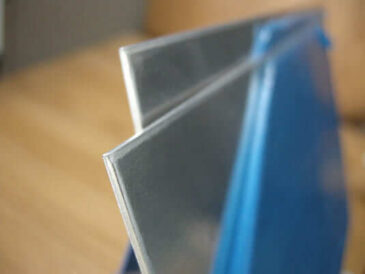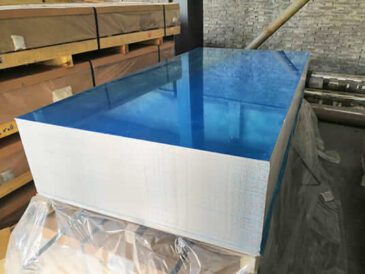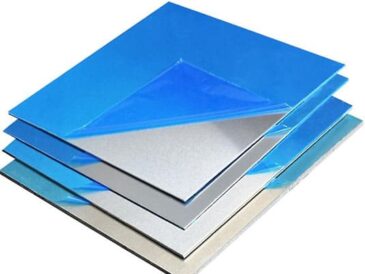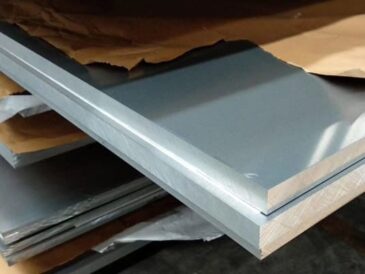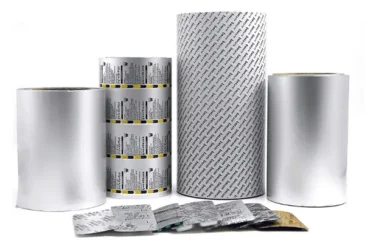Aluminum Melting Temp
11,228 Views 2024-02-21 06:19:26
Detailed introduction of aluminum melting temp
Are you in the business of aluminum melting temp? If so, understanding the optimal temperature for this process is crucial to achieving the best results. In this comprehensive guide, we delve into the secrets of aluminum melting and provide you with all the information you need. From the ideal temperature range to the factors that affect it, we leave no stone unturned.
Aluminum melting involves transforming solid metal into a molten state for casting, fabrication, or other industrial processes. The temperature at which this transformation occurs is critical for ensuring the quality and integrity of the final product. Different alloys and applications may require specific temperature ranges, making it essential to understand the optimal temperature for your specific needs.

Aluminum Melting Temp
Join us as we explore the science behind melting point of aluminum, including the phase changes involved and the role of temperature control in achieving desired outcomes. Whether you’re a seasoned professional or just starting in the industry, this guide will equip you with the knowledge to unlock the secrets of aluminum melting and optimize your processes.
Stay tuned for the next sections as we dive deeper into this fascinating topic.
Why is temperature important in aluminum melting?
Aluminum is a versatile metal with a low melting point compared to other metals, such as steel or iron. The correct temperature is essential for achieving the desired physical properties and characteristics of the molten aluminum.
Firstly, temperature affects the fluidity of the molten aluminum. If the temperature is too low, the aluminum may not flow easily, leading to casting defects and incomplete fills. On the other hand, if the temperature is too high, the aluminum may become too fluid, resulting in excessive shrinkage and distortion during solidification.
Secondly, temperature plays a significant role in the energy balance of the melting process. The heat required to raise the temperature of solid aluminum to its melting point, known as the latent heat of fusion, is substantial. Precise temperature control ensures efficient energy usage and minimizes heat loss during the melting process.
Lastly, temperature affects the alloying elements present in the aluminum. Different alloys have varying melting ranges, and maintaining the correct temperature is crucial for achieving the desired alloy composition and properties. Incorrect temperatures can result in separation of alloying elements, leading to an inferior final product.
In the next section, we will explore the optimal temperature range for aluminum melting and its significance in different applications.
The optimal temperature for aluminum melting
The optimal temperature for aluminum melting depends on several factors, including the alloy composition, desired properties of the final product, and the specific industrial application. However, most aluminum alloys have a melting range between 600°C (1112°F) and 660°C (1220°F).
Within this range, the aluminum transitions from a solid to a fully molten state, allowing for casting, fabrication, or other processes. Achieving and maintaining the optimal temperature is crucial for obtaining high-quality castings with minimal defects.
For example, in aluminum foundries, the exact temperature requirements may vary depending on the type of casting and the desired properties of the final product. Sand casting, investment casting, and die casting each have their own specific temperature considerations.

3003 Aluminum coils
In sand casting, where aluminum is poured into a mold made of sand, the temperature needs to be high enough to ensure proper flow and fill the mold cavity. However, excessive temperatures can cause sand burn-in, resulting in a rough surface finish.
In investment casting, a wax pattern is created and coated with a ceramic shell. The molten aluminum is then poured into the shell, melting away the wax. The temperature must be carefully controlled to prevent thermal shock and ensure complete wax removal.
In die casting, molten aluminum is injected into a steel mold under high pressure. The temperature must be precise to allow for proper filling of the mold and rapid solidification, ensuring the desired mechanical properties of the final product.
In the following sections, we will explore the factors that can affect the aluminum melting temperature and techniques for achieving optimal temperature control.
The Science of Aluminum Melting
Aluminum melting involves transforming solid metal into a molten state for casting, fabrication, or other industrial processes. The temperature at which this transformation occurs is critical for ensuring the quality and integrity of the final product. Different alloys and applications may require specific temperature ranges, making it essential to understand the optimal temperature for your specific needs.
Factors that affect aluminum melting temperature
Several factors can influence the melting temperature of aluminum and its alloys. Understanding these factors is essential for achieving consistent and accurate temperature control.
The primary factor that affects the melting temperature of aluminum is the specific alloy composition. Different elements added to aluminum can raise or lower its melting point. For example, alloying with copper increases the melting point, while alloying with magnesium decreases it.
Other factors that can impact melting temperature include impurities, such as oxides or other metals present in the aluminum. These impurities can act as nucleation sites for solidification, affecting the overall melting behavior. Controlling and minimizing impurity levels is crucial for consistent melting temperature.

Hot rolled aluminum plate ingot
Furthermore, the heating rate and method used during the melting process can influence the temperature. Slow heating rates can result in partial melting and segregation, leading to inconsistent temperature distribution. Rapid heating rates, on the other hand, can cause thermal shock and potential damage to the equipment.
The atmosphere in which the melting takes place, such as air or inert gas, can also impact the melting temperature. Aluminum has a high affinity for oxygen, and exposure to air can lead to oxidation and the formation of undesirable oxide layers. Using protective atmospheres, such as nitrogen or argon, can help prevent oxidation and maintain the desired melting temperature.
In the next section, we will explore various techniques for achieving and maintaining the optimal temperature for aluminum melting.
Techniques for achieving optimal aluminum melting temperature
Achieving and maintaining the optimal temperature for aluminum melting requires careful consideration and the use of appropriate techniques. Here are some commonly used methods:
- 1. Furnace Selection: Choosing the right type of furnace is crucial for achieving precise temperature control. Electric resistance furnaces, gas-fired furnaces, and induction furnaces are commonly used for aluminum melting. Each type has its advantages and considerations, such as energy efficiency, heating rate, and temperature range.
- 2. Thermocouples and Temperature Sensors: Accurate temperature measurement is essential for maintaining optimal temperature. Thermocouples and other temperature sensors are used to monitor the temperature throughout the melting process. Proper placement and calibration of these sensors ensure accurate readings and temperature control.
- 3. Temperature Control Systems: Advanced temperature control systems, such as PID controllers, are used to regulate the energy input and maintain the desired temperature range. These systems continuously monitor the temperature and adjust the heating or cooling accordingly to achieve optimal melting conditions.
- 4. Stirring and Mixing: Stirring the molten aluminum helps to distribute heat uniformly and prevent temperature variations within the melt. Mechanical stirrers, gas injection systems, or electromagnetic devices can be used to ensure homogeneity and temperature consistency.
- 5. Insulation and Refractory Materials: Proper insulation and selection of refractory materials are crucial for minimizing heat loss and maintaining the desired temperature. Insulating linings and refractory coatings help retain heat within the furnace, improving energy efficiency and temperature stability.
In the following section, we will discuss some common mistakes to avoid when dealing with aluminum melting temperature.
Common mistakes to avoid in aluminum melting temperature
Achieving optimal temperature control in aluminum melting can be challenging, especially for those new to the process. Here are some common mistakes to avoid:
- 1. Inadequate Temperature Monitoring: Failing to properly monitor the temperature throughout the melting process can lead to inconsistent results. Accurate temperature measurement using thermocouples or temperature sensors is crucial for maintaining the desired temperature range.
- 2. Poor Heating Rate Control: Improper heating rates can result in partial melting, segregation, or thermal shock. It is important to follow recommended heating rates and avoid sudden temperature changes that can impact the integrity of the molten aluminum.
- 3. Neglecting Impurity Control: High impurity levels can affect the melting behavior and temperature of aluminum. Regular cleanliness checks and proper handling of raw materials can help minimize impurities and ensure consistent melting temperature.
- 4. Lack of Proper Furnace Maintenance: Neglecting routine furnace maintenance can lead to temperature inconsistencies and equipment failure. Regular inspections, cleaning, and calibration of temperature control systems are essential for optimal performance.
- 5. Ignoring Safety Precautions: Aluminum melting involves high temperatures and potential hazards. Ignoring safety precautions, such as wearing protective gear, using proper ventilation, and following safe handling practices, can result in accidents or injuries.
In the next section, we will explore the tools and equipment commonly used for monitoring and controlling aluminum melting temperature.
Tools and equipment for monitoring and controlling aluminum melting temperature
Accurate monitoring and control of aluminum melting temperature require the use of specialized tools and equipment. Here are some commonly used instruments:
- 1. Thermocouples: Thermocouples are temperature sensors that measure the temperature by utilizing the voltage generated from the junction of two different metals. They are commonly used in furnaces and other high-temperature applications.
- 2. Infrared Pyrometers: Infrared pyrometers measure temperature based on the thermal radiation emitted by the molten aluminum. They are non-contact instruments and provide quick and accurate temperature readings without physically touching the melt.
- 3. Digital Temperature Controllers: Digital temperature controllers are used to regulate the energy input and maintain the desired temperature range. They offer precise temperature control and can be programmed to follow specific temperature profiles.
- 4. Stirring Systems: Mechanical stirrers, gas injection systems, or electromagnetic stirrers are used to mix and homogenize the molten aluminum, ensuring uniform temperature distribution and reducing temperature gradients.
- 5. Thermal Imaging Cameras: Thermal imaging cameras capture the infrared radiation emitted by the molten aluminum, allowing for real-time visualization of temperature distribution and potential hotspots.
Remember to choose tools and equipment that are suitable for the specific requirements of your aluminum melting process. Proper calibration and regular maintenance of these instruments are essential for accurate temperature control.
In the next section, we will discuss safety precautions to consider when dealing with aluminum melting temperature.
Safety precautions in aluminum melting temperature
Working with molten aluminum involves high temperatures and potential risks. It is essential to prioritize safety and take necessary precautions to protect yourself and others. Here are some important safety measures to consider:
- Protective Gear: Wear appropriate personal protective equipment (PPE), including heat-resistant gloves, safety glasses, face shields, and heat-resistant clothing. This will help protect against burns and other injuries.
- Proper Ventilation: Ensure proper ventilation in the melting area to prevent the accumulation of harmful gases or fumes. Use exhaust fans or other ventilation systems to maintain a safe working environment.
- Fire Safety: Have fire extinguishers readily available and ensure all personnel are trained in their proper use. Regularly inspect and maintain fire suppression systems, such as sprinklers or fire blankets.
- Safe Handling: Follow proper handling procedures when dealing with molten aluminum, using appropriate tools and equipment. Avoid direct contact with the molten metal and be cautious of splashes or spills.
- Emergency Response: Establish an emergency response plan and ensure all personnel are familiar with it. This should include procedures for dealing with accidents, injuries, or other emergencies related to aluminum melting.
By following these safety precautions, you can minimize the risks associated with aluminum melting and create a safe working environment.
In the next section, we will explore various applications and industries that rely on the optimal temperature for aluminum melting.
Applications and industries that rely on optimal aluminum melting temperature
Aluminum melting is a critical process in various industries and applications. Here are some examples:
- 1. Automotive: The automotive industry extensively relies on aluminum melting for casting engine blocks, cylinder heads, transmission cases, and other components. Precise temperature control ensures the desired mechanical properties and dimensional accuracy of these parts.
- 2. Aerospace: Aluminum alloys are widely used in the aerospace industry for their lightweight properties. Melting aluminum to create aerospace-grade alloys requires strict temperature control to meet the stringent quality and performance requirements.
- 3. Construction: Aluminum melting is crucial in the construction industry for casting architectural components, structural members, and building facades. Controlling the melting temperature ensures the desired strength, durability, and surface finish of these elements.
- 4. Packaging: Aluminum is widely used in the packaging industry for manufacturing cans, foils, and other containers. The melting temperature must be carefully controlled to achieve the desired formability, thickness, and strength of the packaging materials.
- 5. Electronics: Aluminum melting plays a vital role in the electronics industry for producing heat sinks, connectors, and other electronic components. Precise temperature control is necessary to achieve the required thermal conductivity and mechanical properties.
These are just a few examples of the many applications and industries that rely on the optimal temperature for aluminum melting. By understanding and mastering the temperature control process, you can enhance the quality and efficiency of your operations.
In conclusion, mastering the optimal temperature for aluminum melting is essential for achieving high-quality castings, maintaining the desired properties of the final product, and ensuring efficient energy usage. By understanding the factors that affect melting temperature, employing appropriate techniques, and following safety precautions, you can optimize your aluminum melting processes and excel in your industry. Stay tuned for more valuable insights and tips on unlocking the secrets of aluminum melting.

